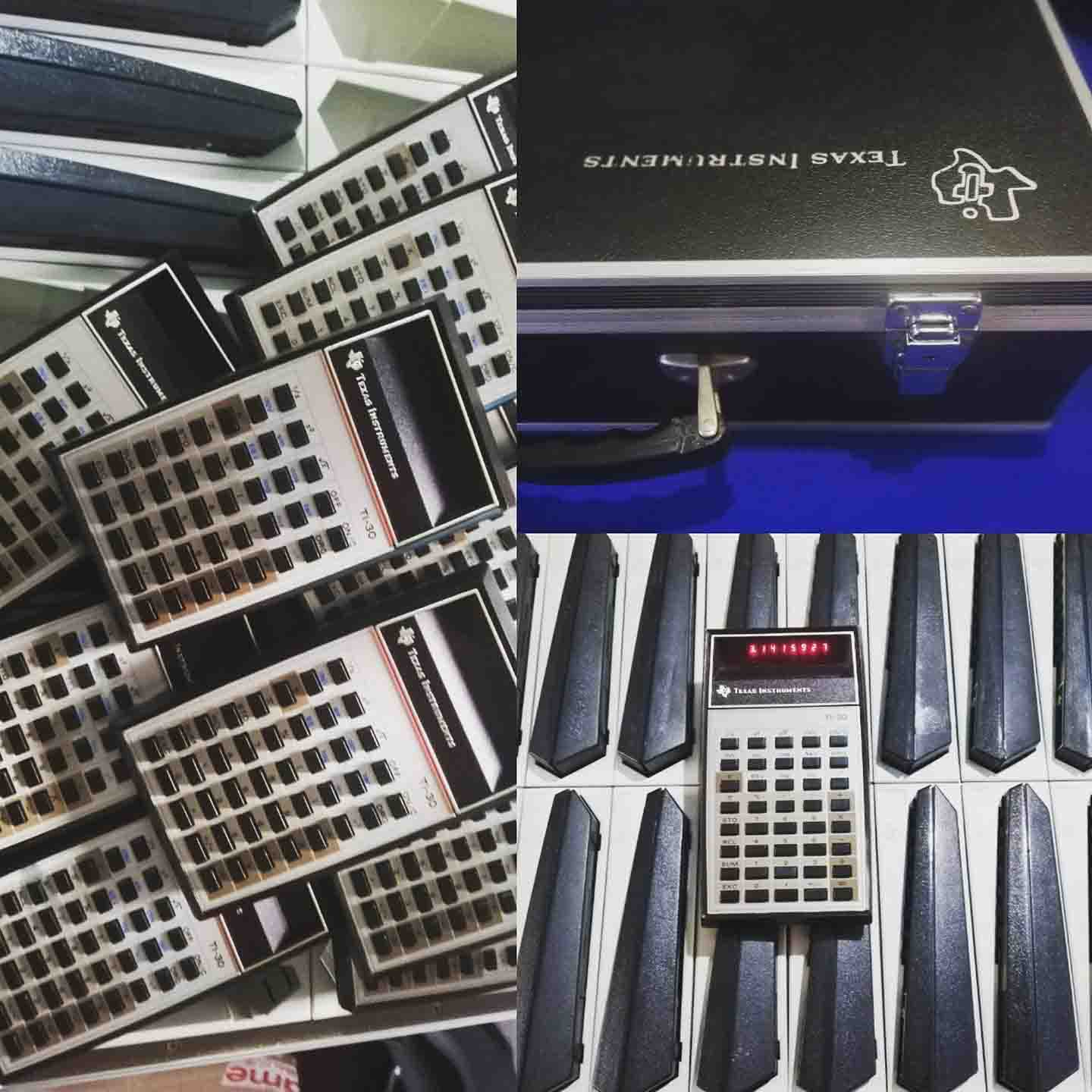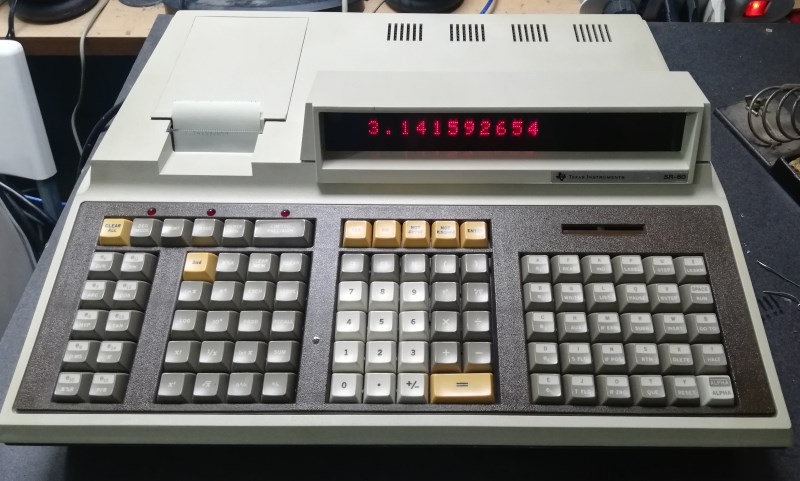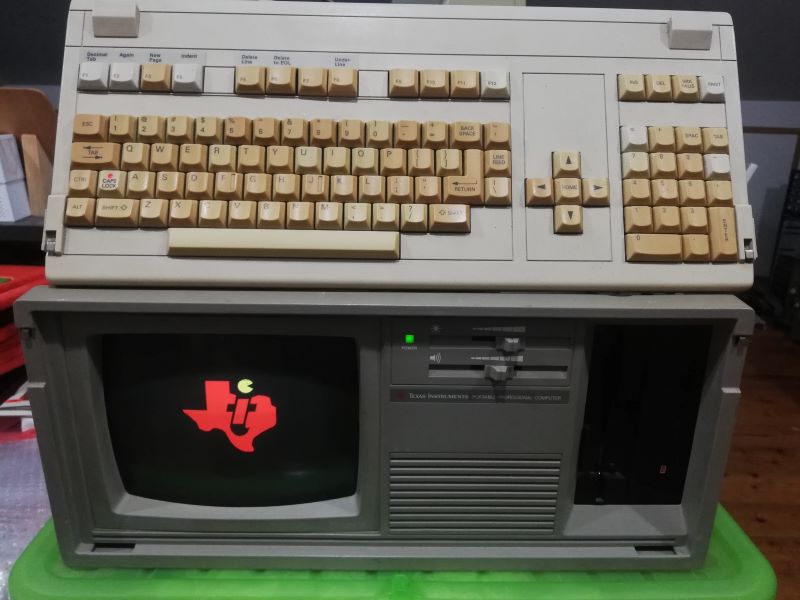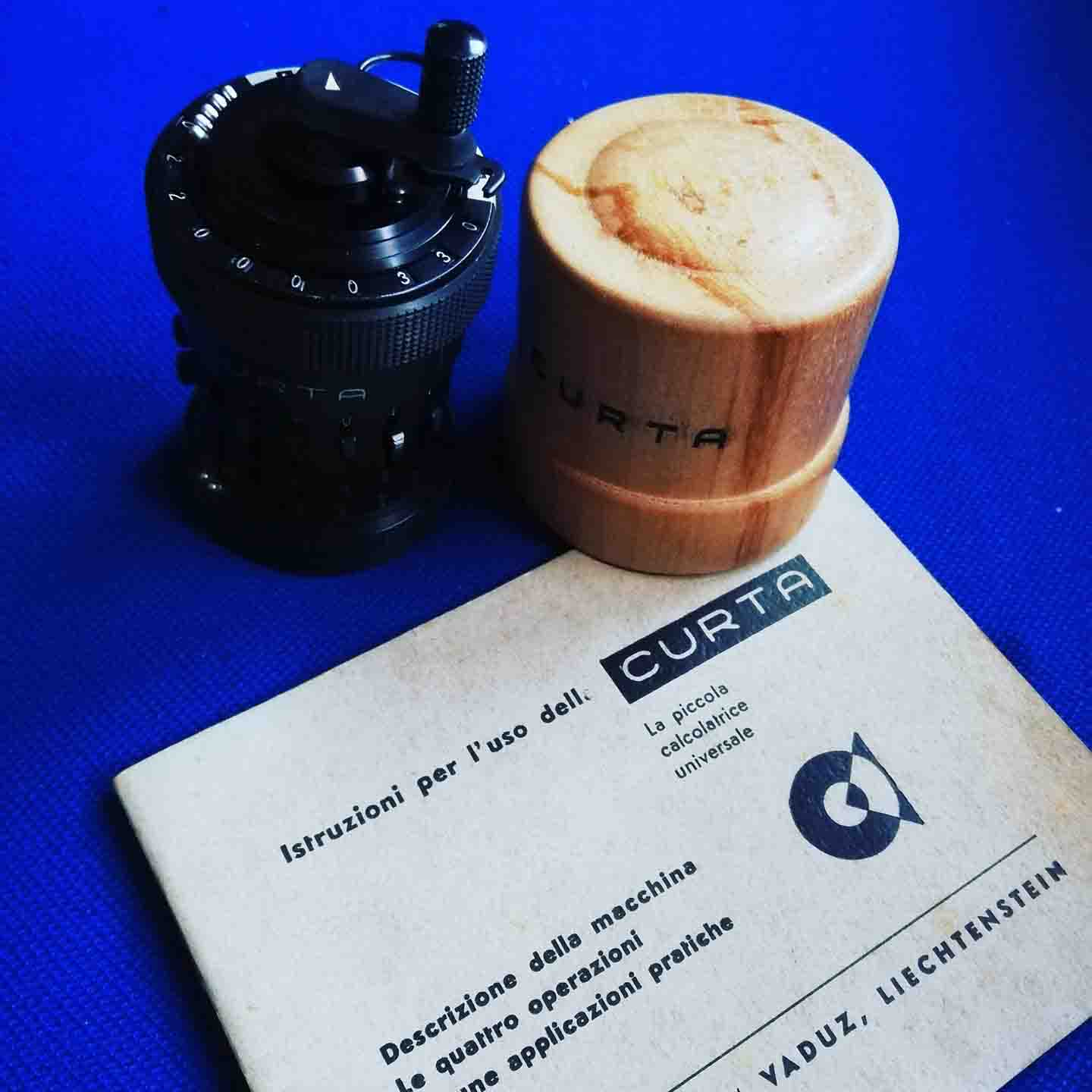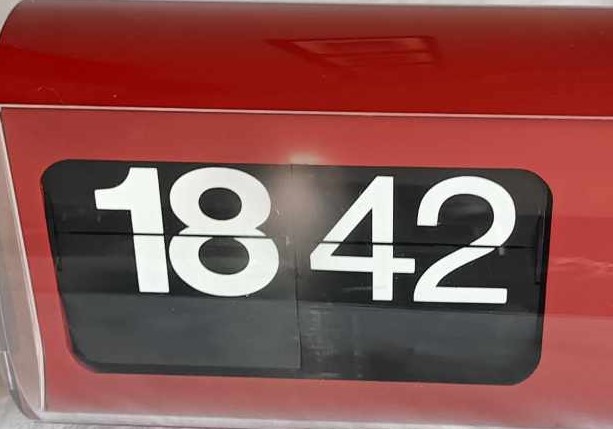TI Museum
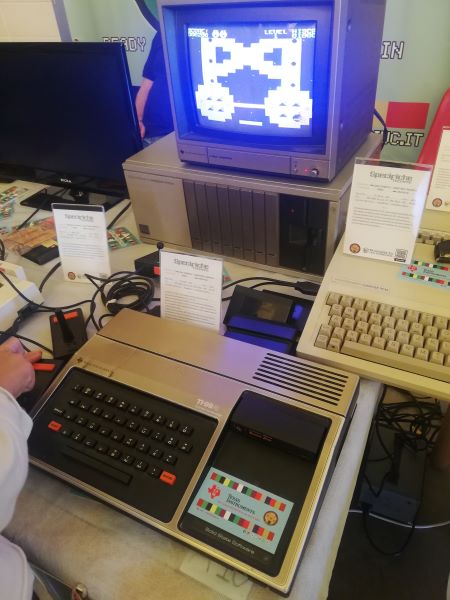 The commercial life of the TI-99/4 was however short with the announcement of its replacement with the 99 / 4A which would then be presented at the "Consumer Electronics Show", on June 30, 1981.
The commercial life of the TI-99/4 was however short with the announcement of its replacement with the 99 / 4A which would then be presented at the "Consumer Electronics Show", on June 30, 1981.
In order not to disappoint its customers, Texas Instruments offered to replace the old computer / 4 with the new Texas Instruments TI-99 / 4A totally free of charge but on the condition that the purchase of the / 4 had been at least 6 months before. of the release of the new model, only the shipping costs were charged to the customer.
The company T.I. tried to market the Texas Instruments TI-99/4 also in Italy and France, but due to delays, its distribution was immediately interrupted to make way for the / 4A already present in the US market. In any case, in Europe the 99/4 found no interest in the market also precisely because of the monitor alley which had a US NTSC standard and therefore problematic for European standards. Texas Instruments, strangely, never officially announced the discontinuation of the TI-99/4. In total, around 25,000 units were produced.
Home Computer TI-99/4A 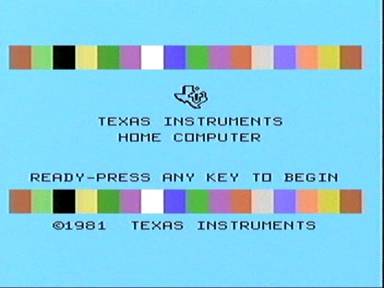
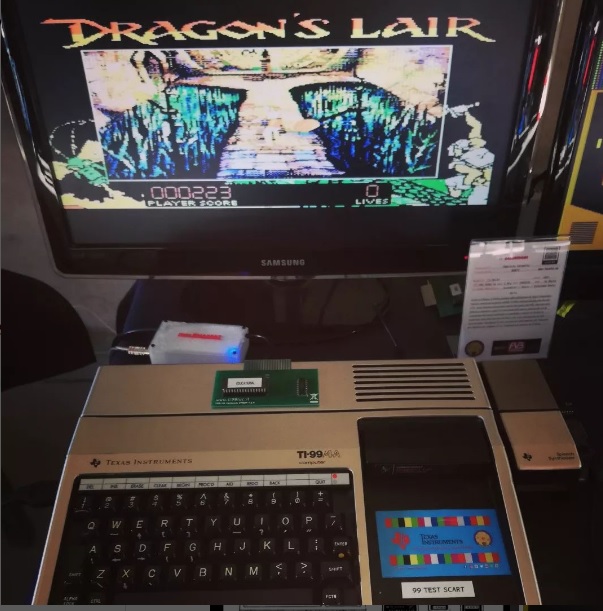
Released:June 1981 Price: US$525 (without monitor) How many:2.8 Million
CPU:TI TMS9900, 3MHz Memory:16K RAM, 26K ROM Sound: 3: channels + effect Joystick: 2
Display:Video via an RF modulator 32 characters by 24 lines text 192 X 256, 16 color graphics
Ports:ROM cartridge (on front) Data storage cassette Audio/Video output Joystick input CPU bus expansion
Peripherals:Speech Synthesizer Peripheral Expansion Box Data storage cassette 300 baud modem
OS:ROM BASIC
TI99-4A Main BOARD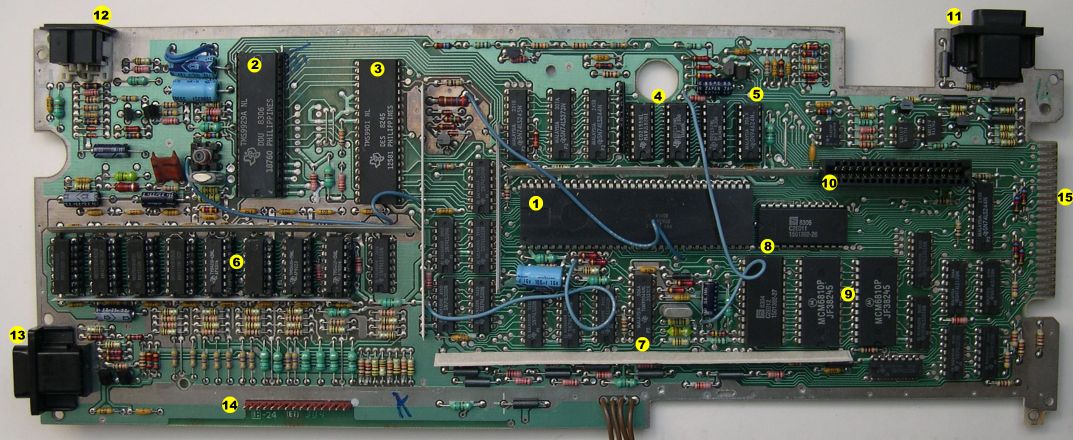
| 1 | TMS9900 CPU central process unit |
| 2 | TMS9918A VDP video display processor |
| 3 | TMS9901 HW Interface |
| 4 | Grom Chips CD2155/CD2156/CD2157 |
| 5 | TMS9919/SN94624 Sound Chips |
| 6 | 8 x TMS4116 RAM Chips |
| 7 | TMS9904 Clock Generator |
| 8 | 2 x 4k ROM chips (1501392-26) |
| 9 | 2 x 128 byte MCM6810P Scratch-pad RAM |
| 10 | Command Module Connector ( cartridges ) |
| 11 | Cassette Port |
| 12 | Video Port |
| 13 | Joystick Port |
| 14 | Keyboard Connector |
| 15 | Expansion Port |
 In August of 1983 TI released the TI-99/4A QI. Though this name was not official for the console, it was what the motherboard was designated. QI stood for Quality Improved. No visual changes were made to the exterior of the console, and in fact they are very hard to distinguish from the beige models. On the other hand, major changes were made to the internal components of the QI. We will take a look at these changes a little later.
In August of 1983 TI released the TI-99/4A QI. Though this name was not official for the console, it was what the motherboard was designated. QI stood for Quality Improved. No visual changes were made to the exterior of the console, and in fact they are very hard to distinguish from the beige models. On the other hand, major changes were made to the internal components of the QI. We will take a look at these changes a little later.
One change that was made that created major grumbling was TI's decision to change the internal workings to lockout unlicensed ROM cartridges. This was done to keep other 3rd party companies from producing cartridges for the TI-99/4A. Not all QI consoles had this "feature", and even non QI, later beige consoles may have. It is easy to determine if you have the lockout or not. Look at the first screen (the one with the color bars) when you turn on the console, if you show a copyright date of 1981 you do not have the lockout, but if it shows a copyright date of 1983 then you do.
 The TI-99/4 and TI-99/4A are home computers released by Texas Instruments in 1979 and 1981, respectively. Based on the Texas Instruments TMS9900 microprocessor originally used in minicomputers, the TI-99/4 was the first 16-bit home computer, and the associated video display controller provided color graphics and sprite support that was among the best of its era.
The TI-99/4 and TI-99/4A are home computers released by Texas Instruments in 1979 and 1981, respectively. Based on the Texas Instruments TMS9900 microprocessor originally used in minicomputers, the TI-99/4 was the first 16-bit home computer, and the associated video display controller provided color graphics and sprite support that was among the best of its era.
The calculator-style keyboard of the TI-99/4 was cited as a weak point, and TI's reliance on ROM cartridges and their practice of limiting developer information to select third parties resulted in a lack of software for the system. The TI-99/4A was released in June 1981 to address some of these issues, featuring a simplified internal design, full-travel keyboard, improved graphics, and a unique expansion system. At half the price of the original model, sales picked up significantly and TI supported the 4A with peripherals, including a speech synthesizer and a "Peripheral Expansion System" box to contain hardware add-ons. TI released developer information and tools, but the insistence on remaining sole publisher continued to starve the platform of software.
The 1981 US launch of the TI-99/4A followed the Commodore VIC-20 by several months. Commodore's CEO Jack Tramiel had once been offended by TI's predatory pricing during the mid-1970s, and retaliated with a price war by repeatedly lowering the price of the VIC-20 and forcing TI to do the same. By 1983, the 99/4A was selling for under US$100, at a loss. Even with the increased user base created by the heavy discounts, Texas Instruments suffered a US$330 million loss in the third quarter of 1983 and announced the discontinuation of the TI-99/4A in October 1983, with production ended in March 1984.
The TI-99/4 was intended to fit in the middle of a planned range of TI-99 computers, none of which were ultimately released but prototypes and documentation have been rediscovered after the TI-99/4A was discontinued.














